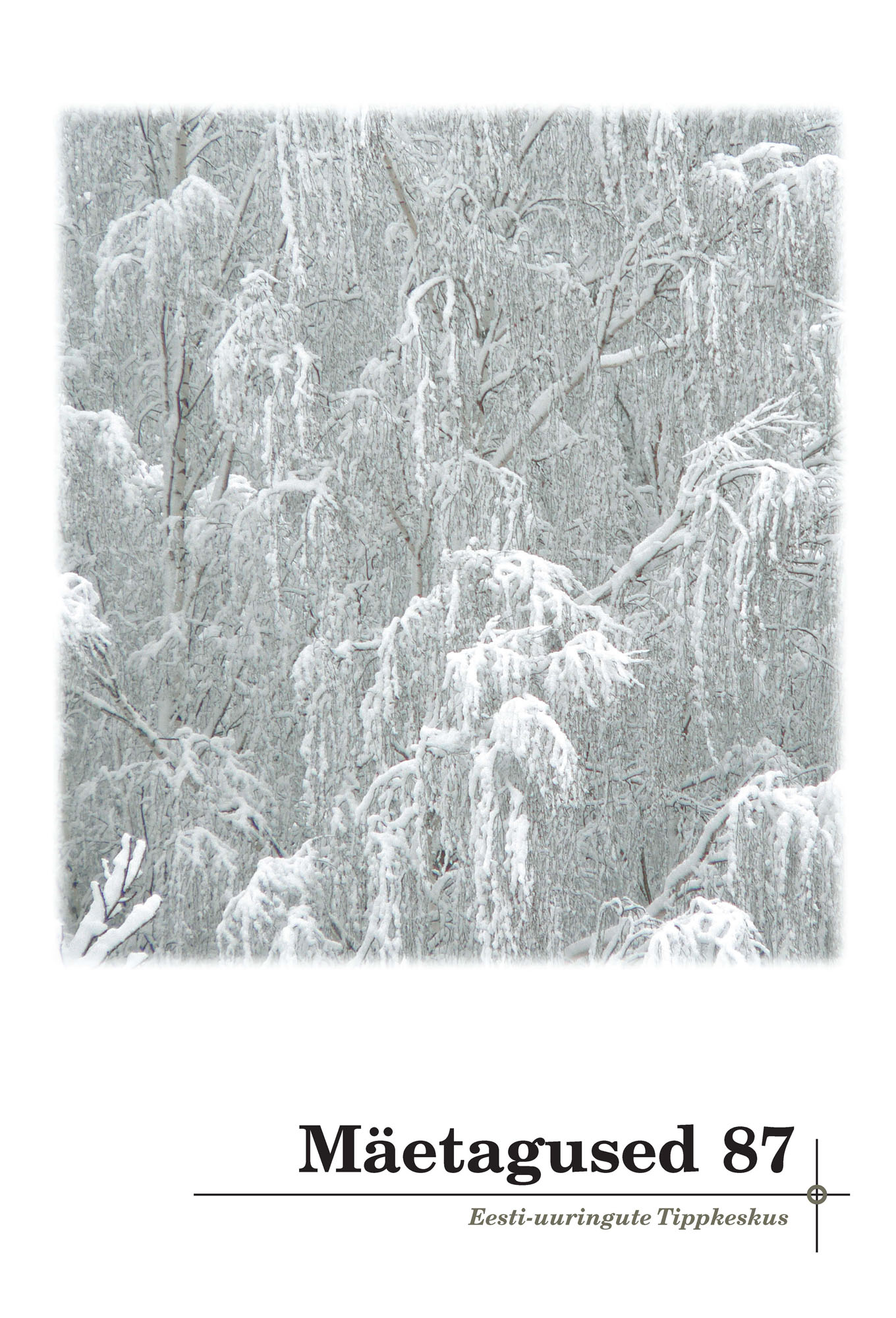Folkloristika Tartu ülikoolis 1941–1944: eriala järjepidevuse küsimus
Folkloristics at the University of Tartu in 1941–1944: Continuity of the discipline
Author(s): Tiiu JaagoSubject(s): Cultural history, Customs / Folklore, Cultural Anthropology / Ethnology, Culture and social structure , Higher Education , History of Education, WW II and following years (1940 - 1949)
Published by: Eesti Kirjandusmuuseum
Keywords: August Annist; Department of Estonian and Comparative Folklore; history of folklore research; German occupation; University of Tartu;
Summary/Abstract: The article looks at the teaching of folklore at the University of Tartu during World War II and the German occupation. It covers three academic years, from the autumn of 1941 to the spring of 1944. In previous studies, the period under review has been presented as a disruption: these years were either ignored altogether or described as an aberration in the development of the Soviet university. Yet it is noticeable that, when discussing the contribution of scholars whose professional biography also covers this period, their work is presented in the context of years, not political periods. All three approaches are characterised by the ideology of an authoritarian state: if research done during the German occupation was spoken of positively, it could be interpreted as anti-Soviet. Therefore, this topic – the everyday life of the University of Tartu during the German occupation and the war – is expected to become relevant. The gap in knowledge needs filling. Was there any activity in folklore at all during this period? The Chair of Folklore was established at the University of Tartu in 1919, when the Estonian-language university was opened. In the Tsarist era (1802–1917), studying the Estonian language and culture was possible in lectureship courses only. Jaan Jõgever (1860–1924) systematically taught folklore as part of the lectureship course from 1909. In 1919, Jaan Jõgever became the dean of the Faculty of Philosophy and one of the leading architects of the structure of the chairs of the Estonian language, culture and history at the university. Walter Anderson (1885–1962), an alumnus of Kazan University, who was already internationally renowned, was invited to the post of professor of folklore. In parallel, courses in Estonian folklore were taught by M. J. Eisen (1857–1934), who had previously worked as a pastor but, as a folklore collector, was a good expert on Estonian folklore. After Eisen died and Anderson left Tartu (in the course of the Umsiedlung in 1939), three alumni of the Estonian-language university engaged in teaching: Oskar Loorits (1900–1961), Elmar Päss (1901–1970), and the literary scholar August Annist (1899–1972). Elmar Päss moved to Tallinn at the end of the 1930s. Oskar Loorits, who was also the director of the Estonian Folklore Archives, became in charge of the chair. Due to conflict with the German occupation authorities, he could not continue working at the university at the end of 1942. However, folklore-related activities at the university continued: literary scholar August Annist delivered lectures and gave examinations in the specialisation. In autumn 1944, when the Soviet university reopened, Eduard Laugaste became the head of the Chair of Folklore. Annist continued as a lecturer of literature but was arrested in the early summer of 1945 and spent the next six years as a political prisoner. After he was released, he did not return to the university. This excursus reveals that, despite favourable and unfavourable circumstances, the teaching of folklore at the university that had started in 1909 was not discontinued during the war. However, it also shows that in the first half of the 20th century the government’s role was decisive in shaping the independence of the discipline by establishing the institutions. Today, it is important to analyse the development of the discipline, considering the interactions between the state, the institutions and the researcher(s), to gain a complete picture.
Journal: Mäetagused. Hüperajakiri
- Issue Year: 2023
- Issue No: 87
- Page Range: 125-154
- Page Count: 30
- Language: Estonian

